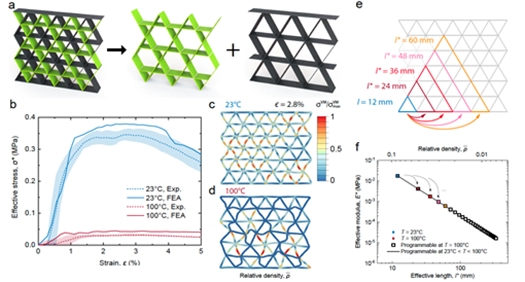Architected Multimaterial Lattices
with Thermally Programmable Mechanical Response

A team at the Harvard MRSEC led by Lewis and Bertoldi has developed a versatile framework to realize thermally programmable lattice architectures capable of exhibiting a broader range of mechanical responses is reported. The lattices are composed of two polymeric materials with disparate glass transition temperatures, which are deterministically arranged via 3D printing. By tailoring the local composition and structure, architected lattices with tunable stiffness, Poisson’s ratio, and deformation modes controlled through changes in the thermal environment are generated. The platform yields lightweight polymer lattices with programmable composition, architecture, and mechanical response.
Publication:
J. Mueller, J.A. Lewis, K. Bertoldi, "Architected Multimaterial Lattices with Thermally Programmable Mechanical Response," Advanced Functional Materials, 2105128 (2021) ![]()
![]()
Jennifer A. Lewis (Material Science & Bioengineering) and Katia Bertoldi (Mechanical Engineering)
2021-2022 Harvard MRSEC (DMR-2011754)
